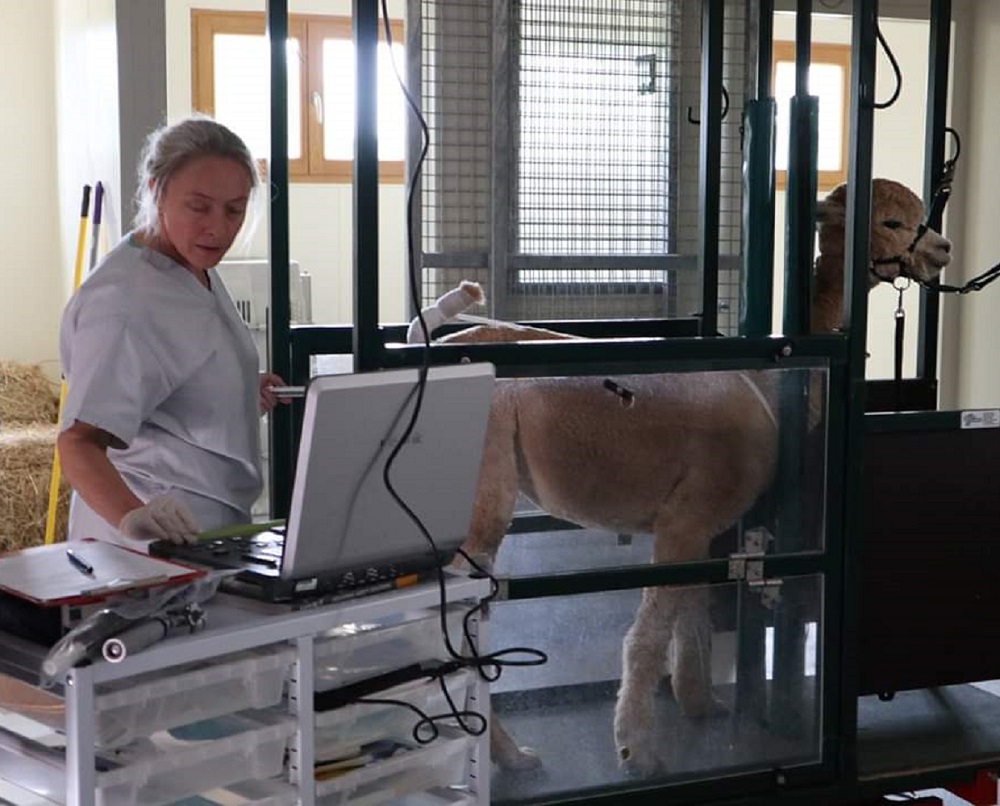Summer has got off to a busy start here at the Clinic. We have had several female patients visit the clinic for breeding soundness examinations. Having the right facilities and equipment are key to performing a proper, successful and safe examination. We have a customised alpaca-specific restraint chute at our clinic in Oxfordshire that means that the alpaca can be properly and safely examined. Instruments may be put up inside the back end of the alpaca and if the alpaca is free to jump around, a successful examination is not possible and it could be dangerous for the patient. We also have a high-end ultrasound machine along with equipment specific and appropriate for the alpaca reproductive tract that facilitates the work that we do. Knowing what findings are normal or abnormal in alpacas is also very important to making a correct diagnosis and potentially treating a case to restore fertility.
One of our patients experienced a retained placenta after birthing her last cria a year ago. Despite several matings since she has struggled to conceive. We found lots of spotting in the uterine wall that is consistent with inflammation/fibrosis, potentially due to damage caused by the retained placenta. Hopefully the damage is not too severe that we can’t improve the uterine environment. We performed an ultrasound-guided flush to stimulate endometrial turnover and also collected a culture swab to evaluate the need for antibiotics.
It is a good idea to seek a postpartum examination for females that experience difficulties relating to birth (such as retained placenta, assisted birthing and C-section delivery) to try and address short term problems that can later cause infertility. If you have any females that struggled to conceive last season, now is the time to get them evaluated to investigate the reason for their infertility. You don’t want to waste another breeding season!

